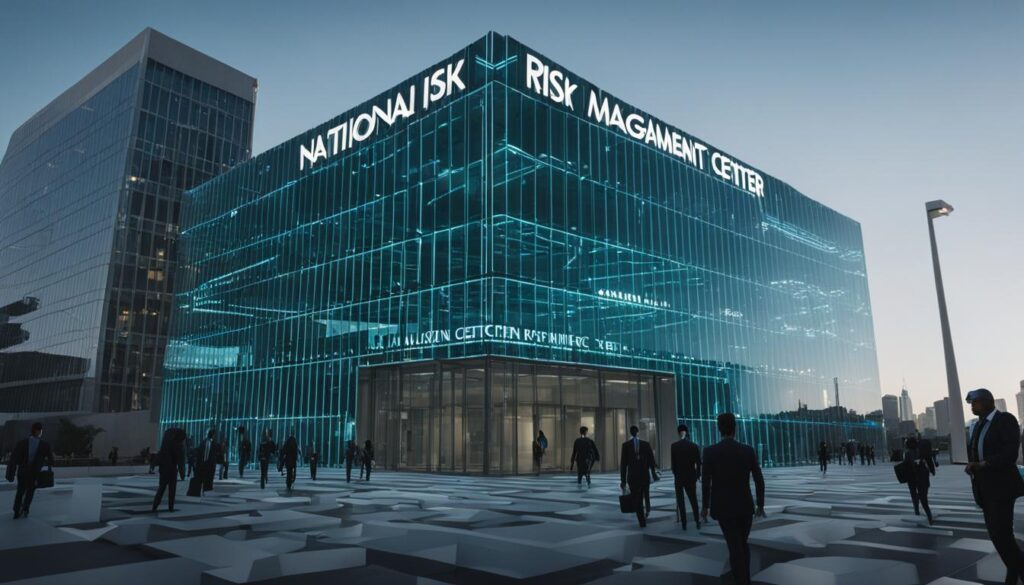Electromagnetic pulses (EMPs) are a topic often confined to the realms of science fiction, but their significance in the real world cannot be overstated.
Spanning both man-made catalysts and natural phenomena, EMP threats possess the capacity to unsettle our modern society in a flash—literally.
The impact on society could be vast and devastating, which is why protection strategies are becoming as central to national safety dialogues as any other defense measures.
As our world grows increasingly interconnected, the need for robust critical infrastructure safeguarding against such high-stakes threats could not be more pressing.
Let’s dive into what makes EMPs a concern of our age and how proactivity could help us steer clear of an unwarranted plunge back into the pre-electric era.
Key Takeaways
- EMP threats are a significant risk to the electronic foundations of society.
- Preparing effective protection strategies is essential for national security.
- Both man-made and natural EMP events can severely disrupt critical infrastructure.
- Mitigating the impact on society requires a blend of advanced technologies and policies.
- Collaborative efforts are the key to developing resilient systems against EMP-related disturbances.
✨Learn How to Protect Your Family Against An EMP Attack On America’s Power Grid: ➡️Blackout USA.
Exploring the Nature of EMP Threats
The risk posed by electromagnetic pulses (EMPs) encompasses a range of destructive scenarios, from the instantaneous disablement of electronic infrastructures to prolonged blackouts.
Unraveling the specifics of EMP threats helps us appreciate the gravity of potential repercussions and underscores the urgency in fortifying our defenses.
Definition and Creation of EMP
At the heart of an EMP is ionization, a crucial process where high-energy gamma rays disrupt the atomic structure of air molecules, culminating in the release of Compton electrons.
These charged particles cascade, producing a broad spectrum of electromagnetic radiation. It’s not only the domain of nuclear explosions; even non-nuclear electromagnetic bombs can trigger these effects via high-powered microwaves, resulting in the formidable EMP shockwave that can wreak havoc on electronic devices.
Distinctions Between High-Altitude and Ground-Level Detonations

While EMPs can arise from varied origins, a distinction is made between those sourced from high-altitude detonations and those at ground level. High-altitude bursts, taking place several miles above the Earth, have a far-reaching, extensive impact on electronic systems—even potentially across continents.
Ground-level events have a markedly more contained range, eluding the widespread ground-level impact.-
EMP vs GMD: Understanding the Differences
Discerning the differences between EMP episodes and Geomagnetic Disturbances (GMDs) is fundamental. While EMPs owe their genesis to human-engineered activities or nuclear incidents, GMDs stem from solar coronal mass ejections and extreme space weather.
These solar phenomena induce electromagnetic threats of their own, by disturbing terrestrial power grids and communication infrastructures. Safeguarding against both EMP and GMD events is paramount, considering their potentially catastrophic outcomes.
✨Learn How to Protect Your Family Against An EMP Attack On America’s Power Grid: ➡️Blackout USA.
The Far-Reaching Consequences of EMP Disruptions
EMP disruptions present a serious challenge to our world’s critical infrastructure. These events have the power to incapacitate vital systems upon which modern society depends.
As we become ever more reliant on technology, the risks attached to electromagnetic pulse incidents have grown exponentially. With the potential to render communication systems inoperable and knock out industrial control mechanisms, the stakes are incredibly high.
Vital components that make up the backbone of our society, such as power grids, transportation controls, and hospital systems, all hinge on the delicate balance of functioning electronic equipment.
An EMP event has the potential to upset this balance, leading to cascading failures across multiple sectors. This level of disruption is not merely a theoretical scenario but a tangible possibility that underscores the need for robust defense and response strategies.

- Critical infrastructure such as water supply, electricity, and medical services risks complete paralysis without protective measures against EMP events.
- Industrial processes relying on industrial control systems could suffer irreparable damage or substantial downtime.
- Our communication systems, the lifelines of both day-to-day business and emergency responses, face severe impact from these high-intensity electromagnetic incidents.
As society’s tendrils extend ever further into the digital realm, the threat of EMP disruptions moves from the outer bounds of possibility to an impending specter requiring immediate and ongoing attention.
In light of these points, it is evident that the specter of EMP disruptions demands serious attention from policymakers, industry leaders, and the public alike. Ensuring the resilience of our critical systems is not only prudent but paramount.
The task at hand involves not just confronting a complex problem but preparing for, and ultimately mitigating, a hard problem with potentially extraordinary consequences.
✨Learn How to Protect Your Family Against An EMP Attack On America’s Power Grid: ➡️Blackout USA.
Preventive Measures and Strategic Safeguards
In an effort to reinforce national resilience and uphold critical infrastructure protection, the U.S. administration introduced Executive Order 13865, signaling a robust stance on electromagnetic pulse (EMP) preparedness.
This strategic directive galvanizes federal agencies, demanding unprecedented levels of preparedness against both human-made and natural EMP occurrences.
Governmental Policies for EMP Resilience
Under the guidance of the Department of Homeland Security (DHS), coordination of policies that bolster defenses against EMP threats takes precedence. The interagency collaboration fostered by the DHS enhances the framework for infrastructure safety and ensures continuity of essential services in the face of potential electromagnetic disruptions.
Techniques for Protecting Critical Infrastructure
The concepts of metallic shielding have been at the forefront of protecting sensitive equipment. This approach covers critical components with continuous metal to curb the damaging effects of electrical surges and magnetic fields. More than mere enclosure, this strategy ensures every potential gap is sealed to fortify against electromagnetic interference.
Advancements in EMP Hardening Methods
The pursuit of innovation in EMP hardening technologies fuels advancements in critical infrastructure resilience. With the DHS’s National Risk Management Center spearheading developments, initiatives like the San Antonio Electromagnetic Defense Initiative emerge.
These programs, in partnership with the private sector, rigorously test and implement cutting-edge technologies designed to weather the storm of EMP disturbances.

As we advance, the integration of these protective measures becomes integral to our shared vision of a resilient nation. The coordinated efforts between government entities and industry leaders underpin a collective defense against the invisible, yet tangible threats posed by EMPs.
It is through such strategic foresight and collaborative endeavors that we pave the way for a secure and enduring infrastructure landscape.
✨Learn How to Protect Your Family Against An EMP Attack On America’s Power Grid: ➡️Blackout USA.
EMP Threats and National Security
The contemporary battlefield has evolved, with electromagnetic pulse (EMP) weapons emerging as powerful instruments in strategic information warfare. Unlike traditional armaments, these devices are designed to target the technological sinews of national security without the catastrophic toll of conventional warfare.
Here, we delve into the crucial role EMPs play in shaping military options and defensive strategies in an age where information dominance is tantamount to battlefield superiority.
Recognizing the centrality of electronic systems in military and civilian spheres, EMPs have become a focal point in national defense agendas.
Developed as a means to non-lethally cripple critical infrastructure, these weapons serve as a testament to the shifting contours of modern warfare where the disruption of strategic communications and operations can decisively undermine an adversary’s capabilities.
In the realm of national defense, EMP technologies are not merely hypothetical constructs but real, tangible assets that can decisively alter the landscape of conflict and security.
- Non-nuclear EMP devices that incapacitate electrical grids and communication networks epitomize the new era of combat where strategic objectives can be met without a single shot fired.
- Advanced military research into EMP capabilities reflects an ongoing commitment to develop military options that prioritize operational continuity amidst diverse theatropic scenarios.
- The integration of EMP-resistant technologies underscores a proactive stance in safeguarding national assets against both adversarial threats and unforeseen electromagnetic incidents.
Ultimately, the imperative to strengthen protective measures against EMP disruptions is clear—a nation’s resilience hinges on its ability to anticipate, prepare for, and adapt to the novel demands of strategic information warfare where the invisible currents of power are as consequential as the might of armies.
✨Learn How to Protect Your Family Against An EMP Attack On America’s Power Grid: ➡️Blackout USA.

Understanding and Mitigating Workplace Threats through EMP Awareness
The landscape of modern enterprise is fraught with various challenges, where workplace threats and employee security sit high on the list of priorities. In this era of technological dependency, the potential for Electromagnetic Pulse (EMP) events to paralyze business operations and compromise employee safety intensifies these concerns, necessitating a proactive stance in managing employee threats and preventing workplace threats.
In confronting these invisible but formidable adversaries, it is critical for businesses to weave EMP awareness into their fabric of security protocols. Doing so not only fortifies their preparedness against sudden disruptions but also protects their most valued assets—their employees.
- Conduct regular training sessions to enhance employee awareness of EMP-related disruptions.
- Implement emergency protocols ensuring continuity of critical operations during an EMP event.
- Invest in EMP-proof infrastructure and secure backup systems for essential data.
- Collaborate with security experts to assess potential vulnerabilities and strengthen defenses.
It’s incumbent upon leadership teams across all domains to spearhead efforts in upholding robust security measures. Doing so sets a precedent for not only safeguarding operational integrity but also nurturing a culture of resilience—in individuals and organizations alike.
“To preemptively tackle workplace threats linked to EMP phenomena, acknowledgment and action are equally vital. Timely execution of strategic plans ensures a safer future, not just within the confines of our workplaces but for society at large.”
The drive to protect and sustain the heartbeat of business amidst the threat of EMPs is no small endeavor, but the ongoing pursuit of such ambitious objectives is a hallmark of resilient societies and foresighted leadership.

✨Learn How to Protect Your Family Against An EMP Attack On America’s Power Grid: ➡️Blackout USA.
Additional Resources and Further Reading
For those invested in EMP research, seeking to bolster infrastructure resilience, or navigating federal guidelines, the information landscape is admittedly vast yet crucial to navigate.
A key document in this field includes the ‘Planning Guidance for Response to a Nuclear Detonation’, which serves as a cornerstone for emergency preparedness, offering measured responses to various levels of nuclear events, and implicitly, to the EMP effects they would generate.
Delving into these pages, readers find not just scenarios but actionable strategies shaped around the harsh realities these phenomena could impose upon public health and safety.
Critical assessment and technology assessment also form an integral part of understanding the EMP threat landscape. Reports from the Commission to Assess the Threat from EMP Attack provide a comprehensive examination that resonates with both technical experts and policy-makers.
These reports distill complex technical information into strategic recommendations, emphasizing the transition from research to real-world application. They provide a window into the nuances of creating EMP-resilient systems that are indispensable for upholding a society’s day-to-day functions, as well as its long-term survivability.
In an era where comprehension leads to prevention, federal guidelines offer a blueprint for a structured approach towards EMP preparedness. Through a concerted effort between the government and expert stakeholders, these guidelines lay the groundwork for cohesive action across various sectors.
By aligning with federal policies and participating in interagency collaborations, practitioners and authorities can collaborate on pushing the boundaries of EMP preparedness, ultimately cementing the robustness of national infrastructure against unforeseen electromagnetic disruptions.
✨Learn How to Protect Your Family Against An EMP Attack On America’s Power Grid: ➡️Blackout USA.
FAQ
What are EMP threats and how do they impact society?
EMP (Electromagnetic Pulse) threats consist of bursts of electromagnetic radiation that can disrupt or damage electronic equipment and critical infrastructure.
These disturbances can lead to cascading effects across various sectors of society, potentially causing long-term disruptions to communication systems, power grids, and other essential services.
What is the difference between EMP and GMD events?
EMP events are usually the result of human-made activities such as nuclear detonations or specialized EMP weaponry known as electromagnetic bombs. GMDs (Geomagnetic Disturbances) are natural occurrences stemming from solar activities like solar flares or coronal mass ejections. Both can have devastating impacts on electronic systems, but they have different origins and characteristics.
What are the far-reaching consequences of EMP disruptions?
The consequences of EMP disruptions can be extensive, affecting everything from the operation of critical infrastructures such as power grids and communication networks to more localized systems like traffic control and industrial processes. This can lead to a loss of essential services and a severe impact on public safety and economic stability.
What measures are in place to protect against EMP threats?
To protect against EMP threats, the U.S. government has established policies such as Executive Order 13865, which directs the Department of Homeland Security (DHS) to coordinate protection and recovery strategies. Protective measures include metallic shielding of sensitive equipment, electrical surge protection, and advancing EMP hardening technologies.
How do EMP threats relate to national security?
EMP threats are closely related to national security because they have the potential to disable military and civilian electronic systems, compromising communication and operational capabilities. Non-nuclear EMP weapons provide strategic options in warfare that can disable an enemy’s technology without causing direct loss of life, emphasizing the need for robust defensive measures.
What can workplaces do to manage the threat of EMPs?
Workplaces can manage the threat of EMPs by incorporating EMP awareness into their security protocols, preparing emergency response plans, and employing protective measures such as surge protectors and shielded infrastructure. Conducting regular risk assessments and employee training programs can also help mitigate the impact of unexpected EMP events.
Where can I find additional resources and information about EMP threats and protection?
Additional resources include federal guidelines like ‘Planning Guidance for Response to a Nuclear Detonation,’ reports from the Commission to Assess the Threat from EMP Attack, and resources from the DHS National Risk Management Center. These provide extensive analysis, strategies, and recommendations for handling EMP threats and enhancing infrastructure resilience.
✨Learn How to Protect Your Family Against An EMP Attack On America’s Power Grid: ➡️Blackout USA.









